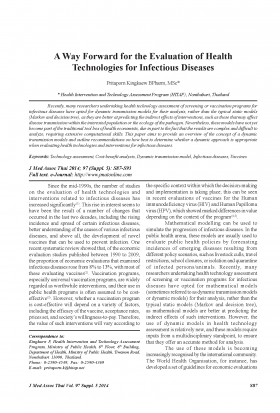This website uses cookies so that we can provide you with the best user experience possible. Cookie information is stored in your browser and performs functions such as recognising you when you return to our website and helping our team to understand which sections of the website you find most interesting and useful.
A Way Forward for the Evaluation of Health Technologies for Infectious Diseases (2014)

รายละเอียดเพิ่มเติม
Pritaporn Kingkaew BPharm, MSc*
* Health Intervention and Technology Assessment Program (HITAP), Nonthaburi, Thailand
Recently, many researchers undertaking health technology assessment of screening or vaccination programs for infectious diseases have opted for dynamic transmission models for their analysis, rather than the typical static models (Markov and decision tree), as they are better at predicting the indirect effects of interventions, such as those that may affect disease transmission within the interested population or the ecology of the pathogen. Nevertheless, these models have not yet become part of the traditional tool box of health economists, due in part to the fact that the results are complex and difficult to analyze, requiring extensive computational skills. This paper aims to provide an overview of the concept of a dynamic transmission models and outline recommendations on how best to determine whether a dynamic approach is appropriate when evaluating health technologies and interventions for infectious diseases.
J Med Assoc Thai 2014; 97 (Suppl. 5): S87-S93
Full text. e-Journal: http://www.jmatonline.com




